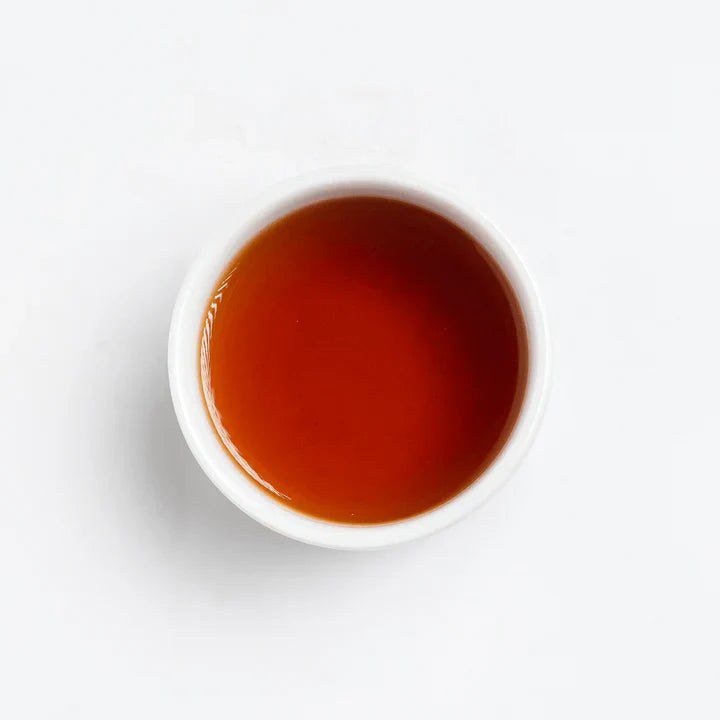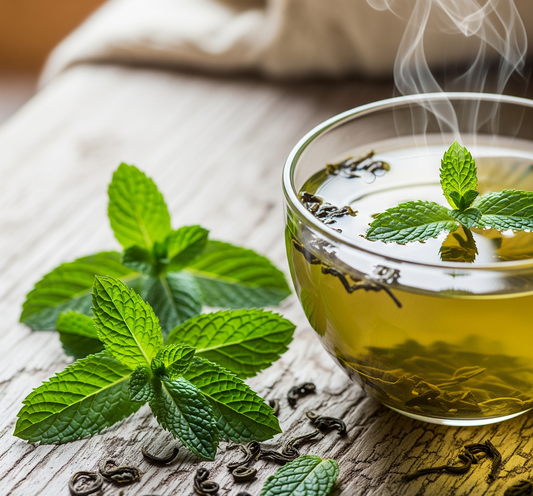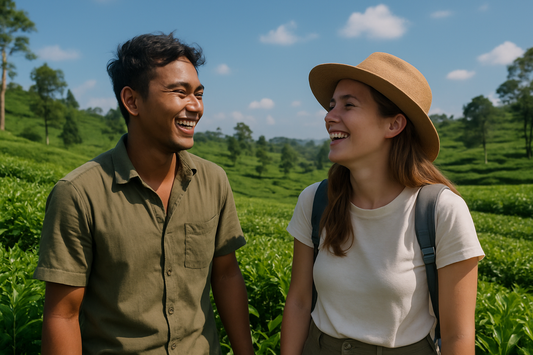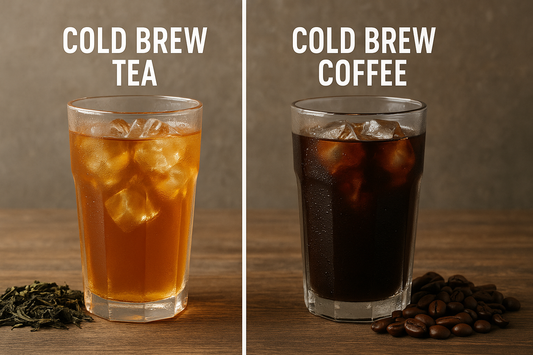Black tea, the world's most consumed tea, accounts for 75% of global tea consumption. It comes from various regions, each offering unique flavors, including Keemun's smoothness and Assam's boldness. The production process involves plucking, withering, rolling, oxidation, and drying, creating rich flavors and aromas.
Whether it’s in a corporate setting or a cozy restaurant, one of the most common instincts is to get yourself a beverage. And since tea is the second most consumed beverage in the world, it is likely that when that instinct arises, you’re getting yourself a nice cup of tea or two. And since according to research in the National Library of Medicine, black tea accounts for 75% of the world's tea it is more possible than not that when we say the word tea, you are thinking of black tea.
But which black tea are you really drinking?
Black tea can be categorized based on its origin, with each region imparting unique characteristics to the tea. Let’s look at what types of teas are available and celebrated in the market.
Chinese Black Tea
 1. Keemun: Keemun, often considered the "Bordeaux" of black teas, boasts a smooth, slightly smoky flavor with hints of fruit and floral notes. This tea originates from Qimen County in China's Anhui Province. Producers first crafted Keemun tea in the late 19th century, and it swiftly gained popularity in the West, becoming a key component in many classic and popular blends.
1. Keemun: Keemun, often considered the "Bordeaux" of black teas, boasts a smooth, slightly smoky flavor with hints of fruit and floral notes. This tea originates from Qimen County in China's Anhui Province. Producers first crafted Keemun tea in the late 19th century, and it swiftly gained popularity in the West, becoming a key component in many classic and popular blends.
This light tea features a distinctive aroma of stone fruit and subtle smoky notes, while its flavor remains gentle and malty, with a smooth, non-astringent profile reminiscent of unsweetened cocoa. Additionally, Keemun celebrates floral undertones and hints of wood, which contribute to its complex and refined character.
2. Lapsang Souchong: Lapsang Souchong, also known as Zhengshan Xiaozhong, represents a distinctive black tea from the Wuyi Mountains in Fujian, renowned for its pronounced smoky flavor. Producers make this tea from leaves that undergo either cold or hot smoking over pinewood fires, resulting in aromas of wood smoke, pine resin, and smoked paprika. The smoking process allows for adjustments in intensity by varying the leaves' proximity to the smoke source. While many enjoy Lapsang Souchong with milk, they rarely sweeten it, and some even use it as a spice in cooking. This tea presents an acquired taste, often inspiring strong reactions among first-time drinkers.
3. Yunnan: Hailing from China’s Yunnan province, Yunnan black tea, also known as Dianhong, is famous for its rich, malty flavor with subtle spicy notes. Developed about 60 years ago by Shao Qiufeng in Fengqing County, Yunnan black tea gained recognition when it was first sold to London in 1938.
Although Yunnan Province has a long history with tea, it wasn’t until the establishment of the People’s Republic of China in 1949 that Yunnan black tea emerged as a prominent variety, eventually accounting for 20% of the province’s tea production by 1987. The tea is characterized by its deep red liquor, delicate smokiness, and layers of caramel and cocoa with light peppery notes.
Japanese Black Tea
Wakoucha, or Japanese black tea, is a rare and exceptional tea known for its distinctive qualities. Unlike Japan’s renowned green teas, Wakoucha stands out with its fully oxidized leaves that produce a rich, deep copper color when brewed. Japanese black teas are made from unique cultivars rarely used for black tea production, giving them a character that differs from Chinese or Indian black teas, with a bright, delicate flavor and a touch of natural sweetness.
Several notable Wakoucha cultivars stand out for their unique qualities. Benihomare is the first registered tea cultivar in Japan, celebrated for its vibrant red brew and rich taste. Benihikari, a cross between Benikaori and the Chinese Cn1, is better suited for black tea due to its tendency to be bitter when processed as green tea. Benifuuki, originally intended for oolong and black tea, is now also used for green tea because of its mellow taste and excellent aroma. This cultivar is particularly recognized for its high levels of O-methylated catechins, which help alleviate seasonal allergy symptoms.
Indian Black Tea
 India is one of the largest tea producers in the world, second only to China. Indian black teas are often named after their regions of origin, with notable examples including Assam, Darjeeling, and Nilgiri.
India is one of the largest tea producers in the world, second only to China. Indian black teas are often named after their regions of origin, with notable examples including Assam, Darjeeling, and Nilgiri.
1. Assam: Indigenous to the Assam region of India, Assam tea is grown from the Camellia sinensis var. assamica variety and has been a staple for centuries. Renowned for its rich, bold, and full-bodied flavor, Assam tea is commonly used in robust breakfast blends such as Irish and English Breakfast. Assam tea is so integral to the region that it is considered the "state drink" of Assam.
2. Darjeeling: Producers grow this tea in the Darjeeling region from the Camellia sinensis var. sinensis varietal, which imparts a lighter, more delicate flavor. Although tea originates in India, British colonial rule introduced these particular plants. Tea enthusiasts often call Darjeeling tea the “champagne of teas,” with first-flush teas harvested in early spring being particularly prized for their light, nuanced qualities.
3. Nilgiri: Located in southwest India, Nilgiri is an emerging region in the tea world. Nilgiri teas are slightly milder than the robust Assams but more intense than the delicate Darjeeling. Produced from the Camellia sinensis var. assamica varietal, Nilgiri teas offer a unique balance of strength and smoothness, making them a noteworthy alternative in the diverse landscape of Indian teas.
Now that you know the different types of black tea, you have to wonder what is black tea. A tea that when steeped in water, you get something black? I mean yes, but also no! Black tea is one of the most beloved types of tea worldwide, known for its robust flavor and rich history. If its more delicate counterparts, white and green tea are toddlers and teenagers, black tea is a full-blown adult. After all black tea undergoes full withering, full fermenting, and full oxidation. This is why your black tea brews that delicious dark color and bold taste.
Production Process of Black Tea
Plucking
During the summer season, tea bushes reach peak maturity, making it the busiest time for tea production. Generally, two leaves and a bud are plucked from each bush at seven-day intervals. The interval between pluckings allows the growth cycle of the tea plant. This interval is integral as it allows the plant sufficient time to produce new shoots, ensuring a continuous and sustainable harvest.

During the growing season, particularly in summer when conditions are optimal with adequate heat and rainfall, tea bushes can regenerate new leaves and buds as quickly as a week. This regular plucking helps maintain the quality and freshness of the tea while preventing overgrowth. The ideal combination of heat and rainfall during this period ensures optimal growth.
Withering
Once hand-plucked, the delicate leaves are withered. Freshly plucked tea leaves are spread out in thin layers, usually in withering troughs or on racks for anywhere between a few hours to overnight allowing air to circulate the leaves, gradually evaporating their moisture. The leaves lose a significant portion of their water content, becoming limp and pliable. With most of the water evaporated, the now rubbery leaves are ready for rolling.
Rolling
The rolling process is essential in black tea production. With great care, the leaves are rolled by machines. In general rolling machines play a crucial role in not just black tea production but any tea’s production.
Cylindrical rollers feature rotating cylindrical drums that apply pressure to the leaves as they turn, bruising and twisting them. This method is often used for large-scale production.

Ball rolling machines employ spherical or ball-shaped rollers that gently tumble the leaves, offering a more controlled and delicate rolling process ideal for high-quality teas. Pneumatic rollers use air pressure to move and roll the leaves, allowing for precise control over the rolling process and enabling specific textures and levels of bruising to be achieved.
During the rolling process, the leaves twist and bruise. This releases essential oils and enzymes that interact with oxygen to develop the tea’s flavor profile. Tea makers apply careful and controlled care to ensure that the leaves bruise evenly and are not overly damaged. They decide the duration and intensity of rolling to let certain characteristics of the leaves bloom. Expert tea makers will have developed a keen sense of aroma that allows them to essentially feel the readiness of their leaves in the air that they breathe.
Oxidation
Rolled tea leaves are spread in oxidizing trays or on marble floors to undergo this transformation. Oxidation involves the enzymes in the tea reacting with oxygen in the air, similar to how a bitten apple turns brown after an extended exposure. During this period, the leaves change from pale green to dark rich brown and develop a robust aroma of roasted nuts, caramel, and dark chocolate.
Drying
After sufficient oxidation, the tea is dried in a commercial dryer, which halts the oxidation process and locks in the developed aromatics. This step completes the black tea production process, resulting in what is known as DMT (Dryer Mouth Tea).
Sorting
While many teas are sold as DMT without further processing, Nepal Tea Collective’s Kanchanjangha Noir undergoes an additional sorting and grading. The DMT is passed through several tea sorting machines, producing different grades such as SFTGFOP1, TGBOP, GOF, and more. After machine sorting, the teas are manually hand-sorted before being packed.
You can read our blog on the Black Tea Production Process here: How is black tea made: A Beginner's Guide to Black Tea Production
Black tea's diversity in flavors and aromas makes it a versatile and beloved beverage worldwide. Whether you prefer the smoky depth of Lapsang Souchong, the floral elegance of Darjeeling, or the robust maltiness of Assam, there's a black tea to suit every taste. By understanding the production process, and unique characteristics of different types of black tea, you can better appreciate this timeless drink.
 Give yourself a break and try some premium organic black teas from Nepal Tea Collective’s collection.
Give yourself a break and try some premium organic black teas from Nepal Tea Collective’s collection.
FAQs About Different Types of Black Tea
What’s the difference between Chinese and Indian black tea?
Chinese black teas, like Keemun and Lapsang Souchong, are often smooth, slightly sweet, and sometimes smoky. Indian black teas, like Assam and Darjeeling, are bolder, malty, and brisk, making them perfect for chai or milk tea.
Is Japanese black tea different from other black teas?
Yes! While Japan is famous for green tea, Wakoucha is its rare black tea. It’s lighter, naturally sweet, and has delicate fruity notes, unlike the stronger flavors of Indian or Chinese black teas.
Why does Darjeeling tea taste so floral compared to Assam?
Darjeeling tea is grown at high altitudes with cooler temperatures, giving it muscatel and floral notes. Assam tea, grown in a humid, low-altitude region, develops a rich, malty, and bold character, making it a favorite for breakfast teas.
What makes Lapsang Souchong smell smoky?
Lapsang Souchong is a Chinese black tea that gets its signature smoky aroma from being dried over pinewood fires. It’s bold, intense, and perfect for those who love a campfire-like flavor in their tea!
About the Author
Nishchal Banskota is the founder of Nepal Tea Collective, dedicated to offering the finest Nepali teas. With years of experience in the tea industry, Nishchal is passionate about sharing the culture and craftsmanship of Nepali tea with the global tea industry. Learn more about Nepal Tea Collective and explore a variety of award-winning teas that bring you closer to the heart of Nepal.




